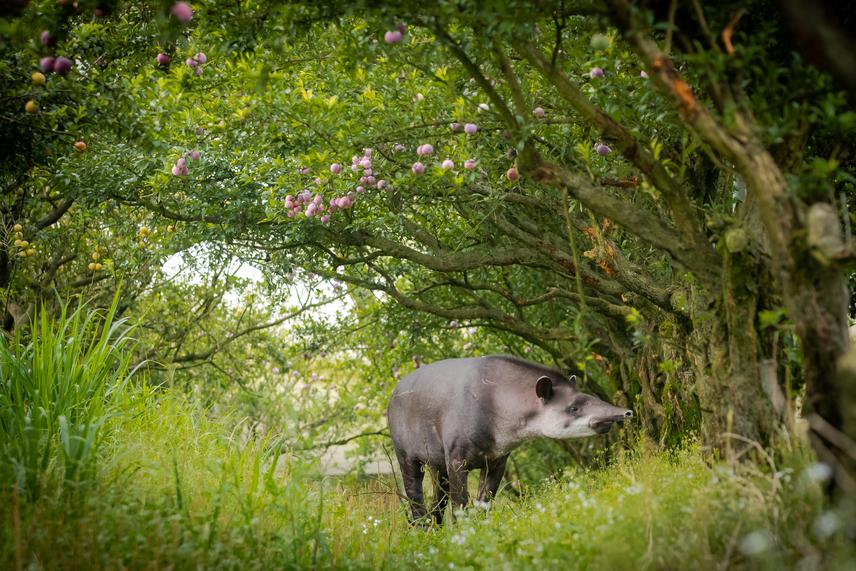Mariana Bueno Landis
Other projects
13 Mar 2013
Effects of Hunting and Population Density of Southern Muriqui (Brachyteles arachnoides) in the Atlantic Forest, Brazil
20 Apr 2016
Lowland Tapir (Tapirus terrestris) Conservation in Carlos Botelho State Park and Buffer Zone, São Paulo, Brazil
Damage to plantations has been reported in our studies with lowland tapirs in the Atlantic Forest, where the financial loss caused by tapirs results in retaliation or, at the very least, a negative attitude towards biodiversity and protected areas. From this initial diagnosis, we moved towards developing a Theory of Change to improve positive interactions between people and tapirs. With this, the specific objectives of this project are:
- to mitigate the impact of crop-raiding by tapirs
- to reduce people’s negative attitudes and perceptions towards tapirs.

Tapir in plum-growing area. © Gabriel Marchi.
In conflict situations, different strategies may be necessary to reduce damage to both tapirs and people, always requiring ethical management of the species and consideration of human well-being.
The use of physical barriers, one of our strategies, has been widely used and evaluated in conflict situations with herbivorous mammals, proving to be the most effective solution to minimise the problem. To transform human–wildlife conflict into coexistence, we are considering three strategies to increase success: 1) Active involvement of the local community throughout all stages of the project to ensure their ownership and support for the initiative; 2) Identification of respected individuals in the community to become more involved with the project; 3) Building on existing strategies that have proven successful in the region (e.g. electric fencing), while also introducing enhancements.
We expect that the physical barrier implemented will be effective in mitigating the impact of tapirs on families, and consequently reducing the risk of tapir killings. We also expect that our actions within the community will result in people being more aware of appropriate ways to deal with conflict, thereby reducing negative attitudes and perceptions towards large mammals.